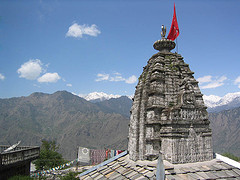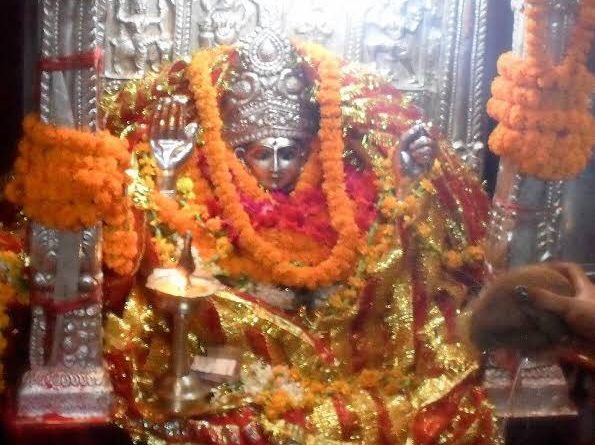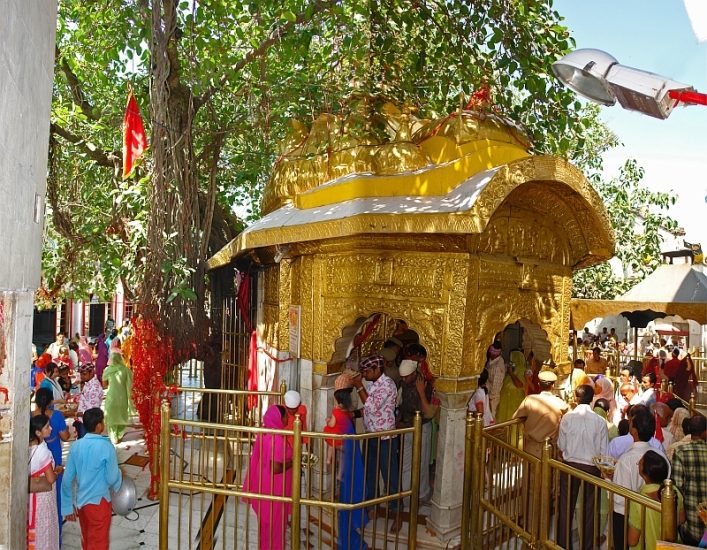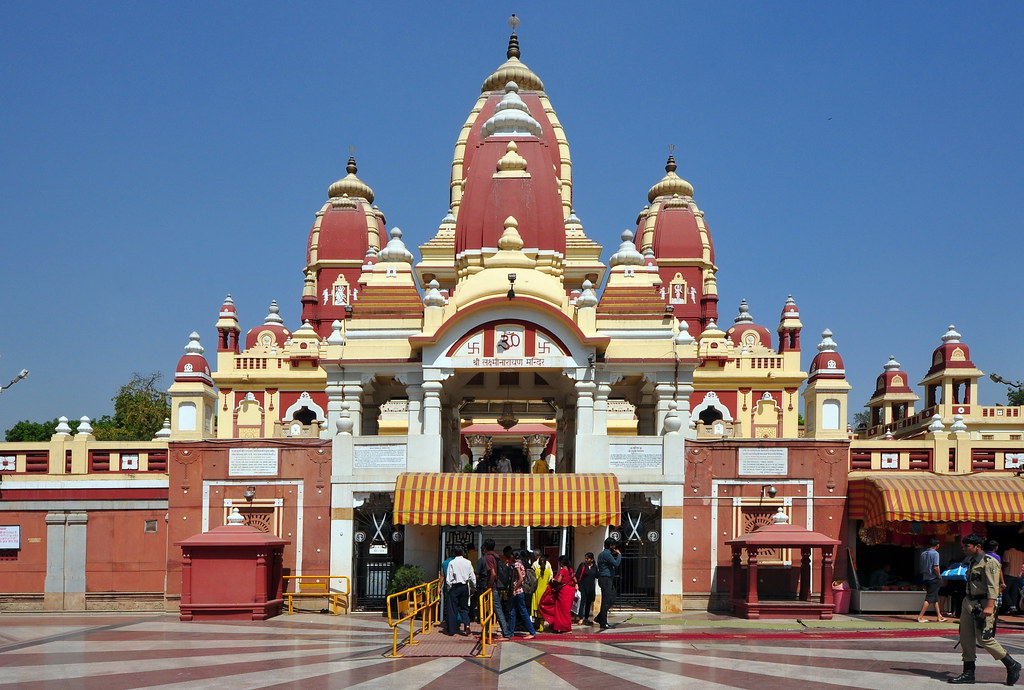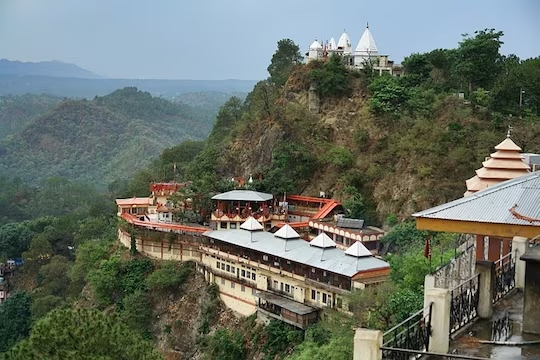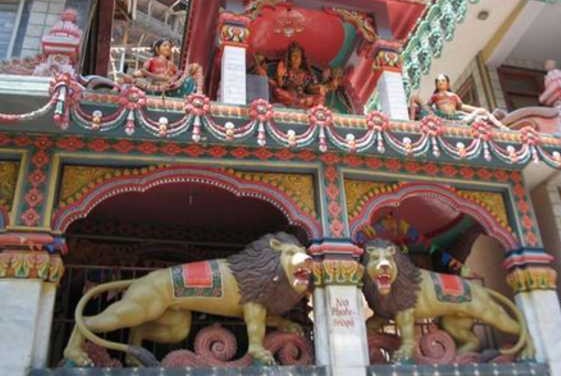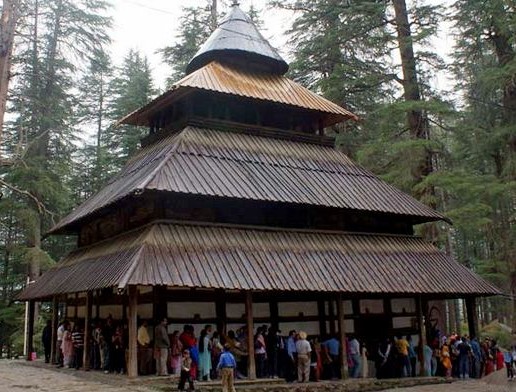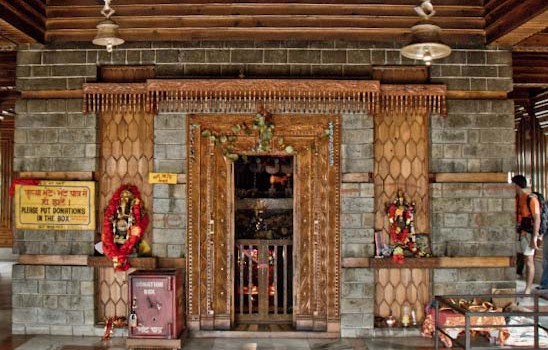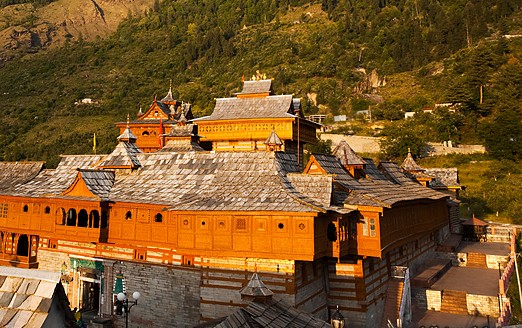Maa Naina Devi
India is well known for the Spiritual Locations. A wide range of pilgrimage facilities and temples of the Hindus are situated in Himachal Pradesh. Naina Devi is one of the most popular Hindu temples in Himachal Pradesh. It is one of the Shakti Peeths of Indian local. The temple of Naina Devi is in the area of Bilaspur in Himachal Pradesh.
There is a popular mythological tale that is associated with Naina Devi in Himachal Pradesh. According to the Hindu tale, Sati used herself in existence to avenge an offend to her spouse, Master Shiva. But Shiva enraged with anger and sadness, grabbed a person’s individual body of Sati and began his gyrating dance known as the Tandava dance in the Puranas. To quit the horrible dance by Master Shiva and to preserve the galaxy from his anger, Master Vishnu created the decision to quit him. Master Vishnu, with the help of his Chakra, cut the corpse of Sati into 50 one items. Thus wherever the items of Sati’s individual body dropped is known as a Peeth. There are 50 one Peeths on this planet. And these Peeths are considered to be very sacred and value viewing for the Hindu pilgrims. It is considered, according to the misconceptions, that Sati’s eye dropped at the very position where the Naina Devi in Himachal Pradesh is designed. The phrase Naina is associated with the eye of the Sati. Among the Temples in Himachal Pradesh, this sacred temple is the most visited one. The Govind Sagar Pond and Bharka Dam is situated near this temple.
Himachal Culture
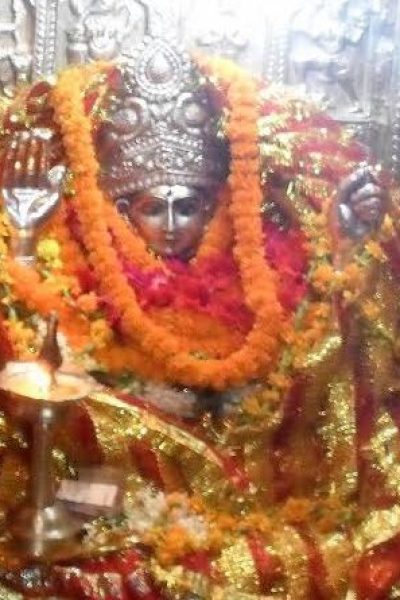
Maa Jwalamukhi
Jawalmukhi temple is one of the most visited Temples in Himachal Pradesh. According to the Hindu tale, the oral cavity of Sati dropped in the position where the temple was being constructed. The Hindu Forehead is designed concerning Goddess Jawalmukhi, also known as Maa Jwala Ji. The significance of Jawalmukhi is the oral cavity of fire and Jwala Ji indicates fire. The temple of Jawalmukhi in Himachal Pradesh is situated only at a range of 34 km from the Kangra Area. The enthusiasts of Sati believe that nine fires get rid of completely. As the stars go, Sati uses herself in existence as she senses the embarrassment of her spouse Master Shiva being insulted.
On discovering this, Master Shiva began his Tandava Dance. To preserve the globe from the anger of Shiva, he cut the corpse of Sati in 50 items. The places where the areas of the individual body of Sati dropped came to be known as Shakti Peeths. The Jawalmukhi temple has thus become a spiritual position as it is considered to be a Peeth. The Aarti period of the Jawalmukhi temple is the middle of attention. The Aarti occurs five periods a day but the one conducted during the evening, known as the Shaiyan Aarti is the most wonderful one. There are useful decorations and useful outfits that are kept within the temple. Guests and enthusiasts from different areas around the globe come to Himachal Pradesh to check out the temple of Jawalmukhi. Usually, they are present at the huge puja that occurs in the temple.
Mata Chintpurni & Chamunda Devi
The temples of Mata Chintpurni & Chamunda Devi are situated in Himachal Pradesh. These Religious Locations are visited by a wide range of enthusiasts and tourists. Both the temples are very generally visited by the pilgrims. These Temples in Himachal Pradesh, are traditional ones and are associated with misconceptions from Hindu stars. The temple of Mata Chintpurni is devoted to Mata Chintpurni and Chhinnamastika Devi. It is in the Una area.
The deity has produced such a name from the idol of the goddess Durga in the temple, It is considered. That you of Sati dropped in this position where the temple has been designed. The enthusiasts arriving at the temple believe that if anything is requested from the Goddess with a genuine center then the wish is satisfied. During the event of Navratri, the enthusiasts of the Goddess collect in the temple property. Mata Chintpurni temple is also a site for monitoring a wide range of Northern Indian local celebrations. The temple of Chamunda Devi is situated 8 km away from Dharamshala in Himachal Pradesh.
According to the Hindu perception, the back area of Sati had dropped in this position after her individual was cut into 50 items by Master Vishnu with his chakra. According to another perception, the goddess of the temple beheaded Chand and Munda, two devils. The other name for Chamunda Devi is Mahakali. Thus the temples of Mata Chintpurni & Chamunda Devi are considered the Shakti Peeths in India.
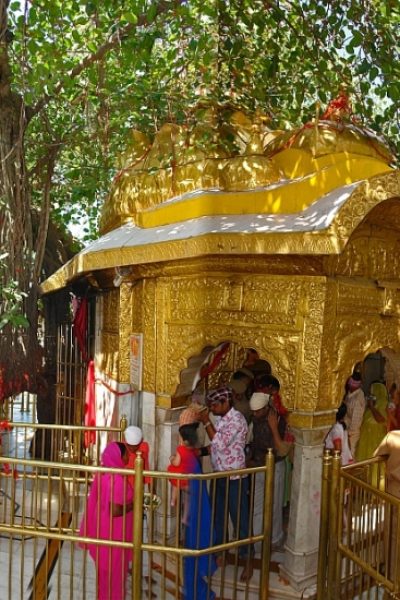
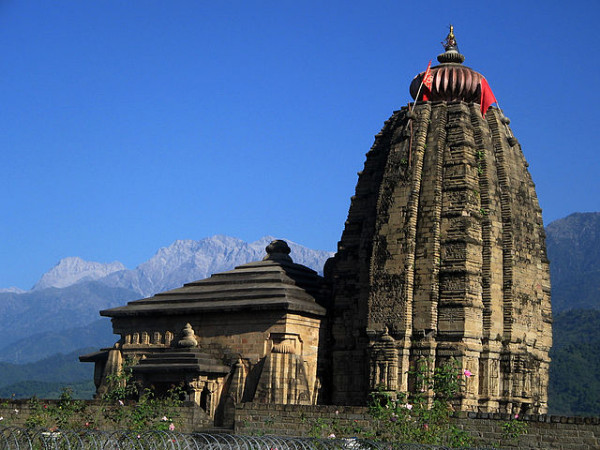
Baijnath Temples
Laxmi Narayan Temples
Laxmi Narayan Forehead is one of the earliest temples and also the biggest one, in the Chamba area of Himachal Pradesh. There are six temples that are in the complicated of theLaxmi Narayan Forehead. These six temples are situated from north to southern. They are devoted to Master Shiva or Master Vishnu. Some of the temples in the complicated are the Shiva temple, Gauri Shankar temple and Radha Krishna.
Laxmi Narayan Forehead was designed in the 10th millennium. The Shikhara design of structure is obvious from the temples in the complicated. The kings of Chamba took proper want to sustain these temples. Each of the kings also provided to the development of the different areas of the temples. The traditional stars think that Raja Sahil Verma designed the temple of Laxmi Narayan Forehead. The temple is kept for the tourists and the enthusiasts from 6 am to 12.30 pm and from 2.30 to 8.30 pm. Laxmi Narayan Forehead in Himachal Pradesh is the identified Spiritual Place of Indian local.
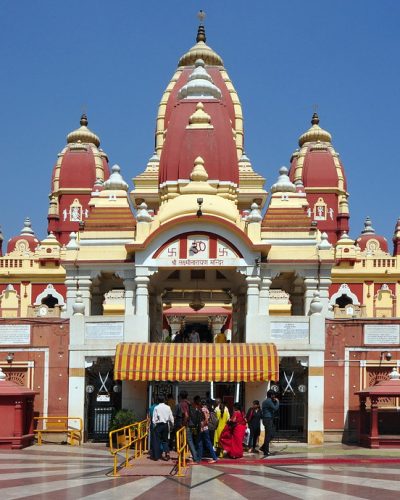
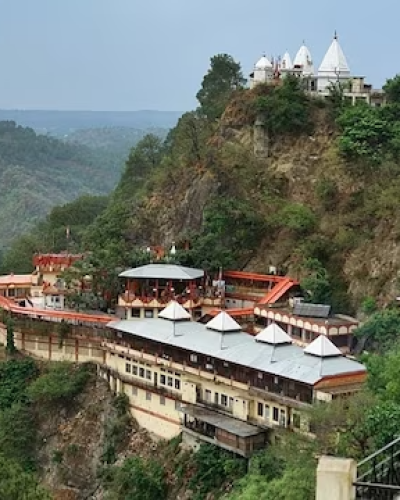
Baba Balak Nath
The temple of Baba Balak Nath is an essential Pilgrim Center in Himachal Pradesh. The temple is in the area of Deothsidh in Himachal Pradesh. The tourists as well as the supporters of Baba Balak Nath trips this Forehead of Himachal Pradesh for the throughout. The Baba Balak Nath temple is situated within a collapse Himachal Pradesh. It is in the Dhaulagiri Mountains, in the Hamirpur. Since the abilities of Baba Balak Nath is known among his supporters, the temple in Himachal Pradesh has become a essential middle of pilgrimage.The Baba Balak Nath temple is situated at a range of 70 km from Bilaspur and at a range of 30 km from Hamirpur.
The visitors this temple can acquire the bus solutions in the area. It is situated in such an area, which is well linked by roads. The enthusiasts come from near and far to check out the temple and get delights. There is an picture of Baba Balak Naththat is placed within the cavern temple.Seeing the progressively improving wide range of pilgrims to the temple of Baba Balak Nath, the govt has taken projects to arrange for the visitors by placing up tented hives and other simple requirements are also being taken proper excellent care of by the Himachal Pradesh govt. The Baba Balak Nath in Himachal Pradesh also draws a wide range of holidaymakers by the encompassing string way assistance to Shah-Talai.
Bijli Mahadev Temple
The temple of Bijli Mahadev is in the Kullu valley of Himachal Pradesh. The elevation at which the temple is situated is about 2,438 gauge among a wonderful location. From this temple spectacular landscapes of the valleys of Kullu and Parvati can be savored to a person’s complete. This temple ofBijli Mahadev is considered one of the sacred Temples of Himachal Pradesh. Since the Bijli Mahadev temple is situated at such a thin air, that it glimmers like a hook in the shiny sunshine.
There goes an traditional perception that the preacher of the temple has to recover the Shiva linga placed within the temple after every whitening. It has been considered by enthusiasts because it is believed that the Shiva linga shatters items with the display of whitening. There goes this everlasting pattern of devastation and recovery of the Shiva linga in the temple of Bijli Mahadev. The Master Shiva is considered to manage the power launched by the weather and thus defends the globe from devastation. There are 60-legged employees that are placed above the temple. This employee draws the whitening which smashes the Shiva linga. The Bijli Mahadev has become the middle where the enthusiasts of Master Shiva come to pay respect.
It is considered to be a sacred Pilgrim Center for the Hindus. The sacred temple is also visited by tourists arriving to the condition of Himachal Pradesh. This temple in the lap of the mountain can also be achieved by hiking. The temple is in ‘khash’ design. 20 mt excellent timber created rod appears are set up for looking for delights from the sky through illumination which shatters the temples Shivlinga Ghat which is then renewed by the temple preacher. All the items are signed up with together with butter as sticky. A unique wedding is conducted in this procedure. The supporters bring a Chariot of Bijli Mahadev where the deity is taken out.
The supporters creates his advantage for providing rainfall, excellent plants, help in lifestyle matters or beginning of a son. A frequent bus goes up to Chansari town, 14 km from Kullu. The staying three km. are to be traversed on feet. The 2 km street is completely enclosed with maple plants. There is excellent hurry at the temple in the 30 days of This summer. A trip to this position provides unforgettable minutes and trip through the woodlands is very pleasant.
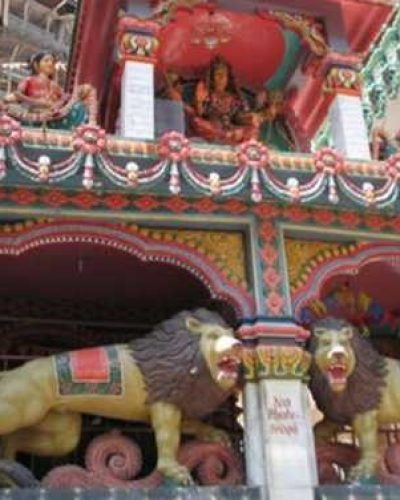
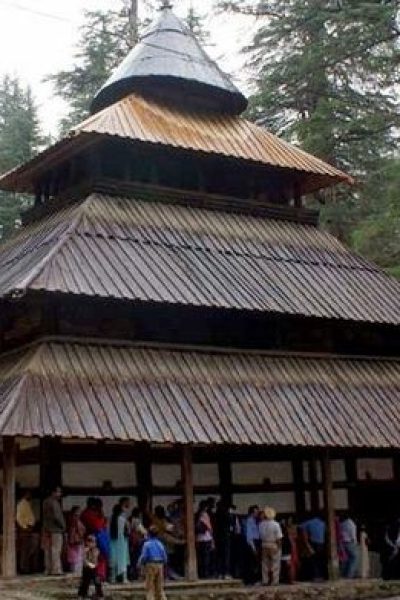
Maa Hadimba Temple
The Hadimba Forehead in Himachal Pradesh is one of the traditional Temples in the condition. Operating out of Dhoongri, a little town in Manali area, the Hadimba Forehead is associated with the tale of the Mahabharata. Due to its location, the temple of Hadimba is also known as the Dhoongri temple. The Hadimba Forehead is designed to pay respect to Devi Hadimba.
The second Pandav, Bhim was the spouse of Hadimba. The tale of the Mahabharata says that Bhim murdered Hadimba’s sibling Hadimb, a devil, and wedded Hadimba in due course. After Hadimba’s wedding to Bhim, she started a penance and delivered a son known as Ghatochkach. In the later decades her son appeared to be a fearless martial artist. From then forward, Hadimba is worshiped as Devi Hadimba, a goddess.
Maharaja Bahadur Singh designed the Hadimba Forehead in the season 1533. The structure of this temple is value admiring. The unique function of the Hadimba Forehead is the ceiling that has the way of a four tiered pagoda ceiling. The temple also features of its wonderful designed entrance created of timber. In May every season, a reasonable is organized in the temple of Hadimba. Another reasonable is organised during Dussehra. The Hadimba Forehead is readily available to the visitors and the tourists in Himachal Pradesh by roads. They can acquire a bus assistance to achieve the temple.
Renuka Temples
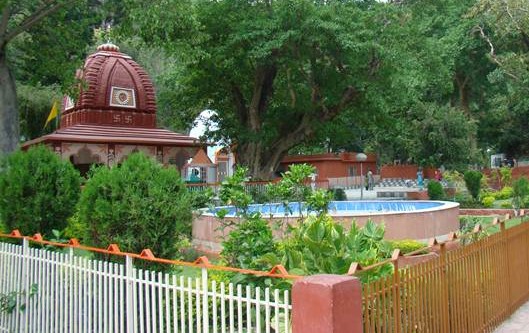
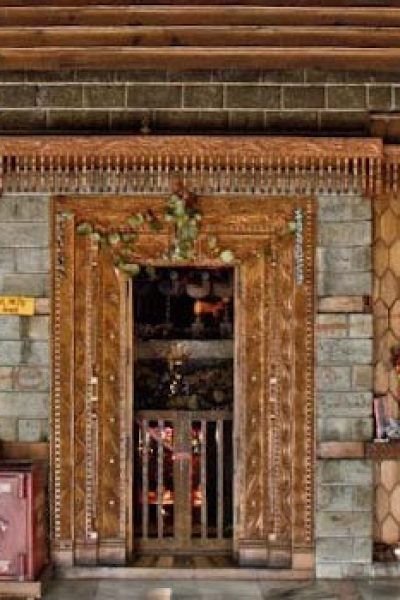
Manu Temples
Dedicated to the sage Manu, the Manu Forehead is in the old township of Manali. The traditional temple is situated at a range of 3 miles from the main industry in old Manali. Relaxing in the crowded position, the temple is often visited by the tourists who appear from different areas around the globe to perspective the only current temple in the nation devoted to the praise of the Rishi Manu. The traditional Manu Forehead in Manali has a unique traditional qualifications.
That is attractive to most individuals who check out the pilgrim identify. According to Hindu perception, Manu sage is the heavenly designer of humanity on the globe. It was in this area that the sage dwelt and meditated. The area of Manali increased by the Manalsu Stream that moves into the Stream Beas and was known as after the sage who lived in this area. The town of Manali homes the Manu Forehead that is visited by the tourists.To achieve the temple, one has to navigate through the slick rock routes that lie before the temple property. The traditional temple is a popular position of praise of the natives of Manali who appear daily to provide their prayer to the designer of humanity. The Manu Forehead at Manali is sacred and excellent to the individuals of the area since there is no other temple devoted to the designer of humanity in the nation. The Manu Forehead has stayed as one of the main Manali sightseeing opportunities for hundreds of decades.
Vaishno Devi Temple
On the way to Manali 3 km. from Kullu, it is a awesome position to pilgrim. There is little cavern just like Vaishno Devi Forehead. an idol of Durga is set up here. In 1964 AD, a st. recognized this temple. After his loss of lifestyle, this temple is handled by Sharda Sewa Sungh. There is a Master Shiva temple also. The management operates a completely free ‘LUNGER’ and a ‘SARAYE’ is there for evening remain also within the temple property.
Circulation of river Beas at the front side of the temple gives this position a instructing perspective. In part the temple property an acupressure therapy center is also operating providing without charge therapy.
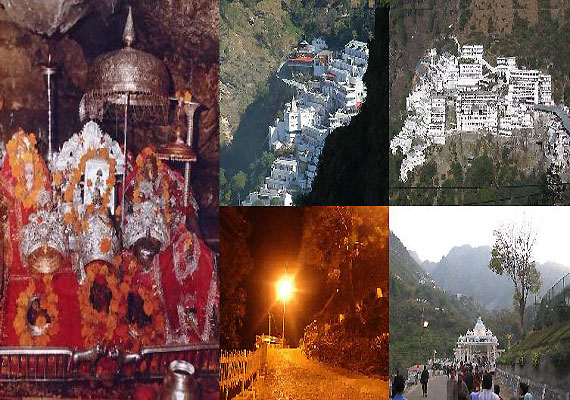
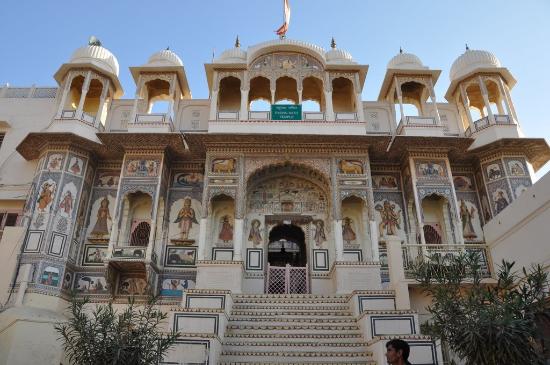
Raghunath Forehead (Kullu)
Bhakhali Temple
In the lap of a mountain, about 10 km far from Kullu, Bhakhali is a little town of Brahmins. But, on feet it is only 4 km. It is the adobe of Jagannathi mata, also known as as Bhuweneshawari, sis of Master Narayana. The temple is 1500 decades of age. A excellent example of regional art of statue, a full-sized lion of rock appears in garden of the temple. Surfaces have the artwork of Durga in various activities. According to old said, a boy of Palsara close relatives went to eat livestock.
He was a excellent flute gamer. Once enjoying on the flute he saw two ladies dance on the his songs. But their legs were not in contact with the globe, they were sailing in the air. He captured one of those ladies. The lady revealed her identification and created the decision to remain in the town. Then Narayana left the temple for the goddess. Three exhibitions, in APRIL, JUNE and on first day of Kullu Dussehra organised here at Bhakhali. On Dussehra day gur-khel is value to seeing. After the sundown the goddess is taken out on a chariot. The position gives a very wonderful perspective at a size of 1833 mts.
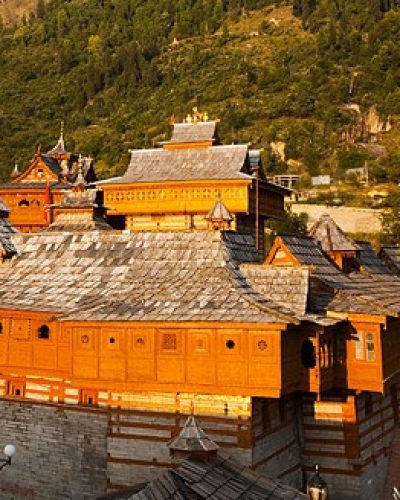
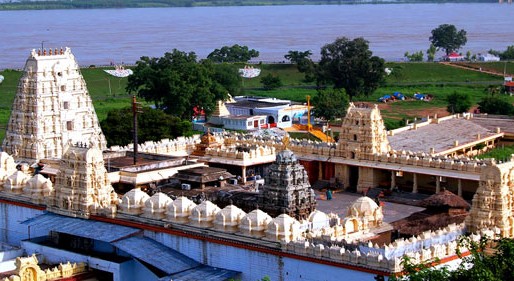
Rama Forehead (Manikaran)
Rama temple designed by Raja Jagat Singh in the position of two Shiva temples, is in pyramidal design. The idol of Rama was introduced from Ayodhya. The idol was kept here until 1661 AD, thereafter it was moved to Kullu. A completely free lunger also operates here. Personal & govt housing is also available here, where hot bath’s assistance has been prolonged. The other temples at Manikaran are Bhagwati temple, Krishna temple of Bairagis and Vishnu temple known as Raghunath temple.
Gurdwara, Manikarna sahib
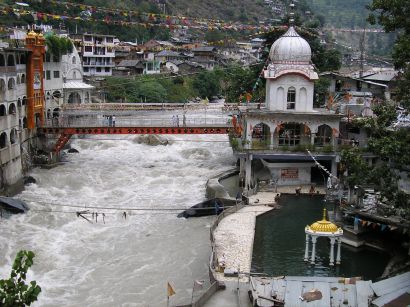
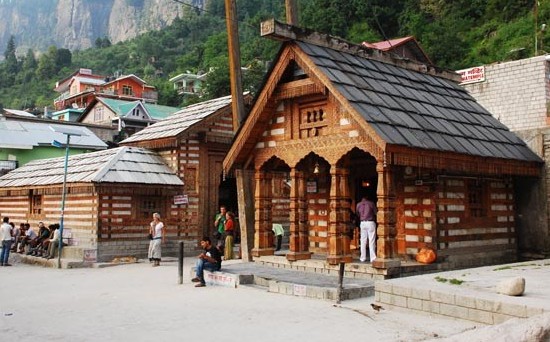
Vashistha Rishi Forehead (Manali)
Vishnu Forehead (Naggar)
